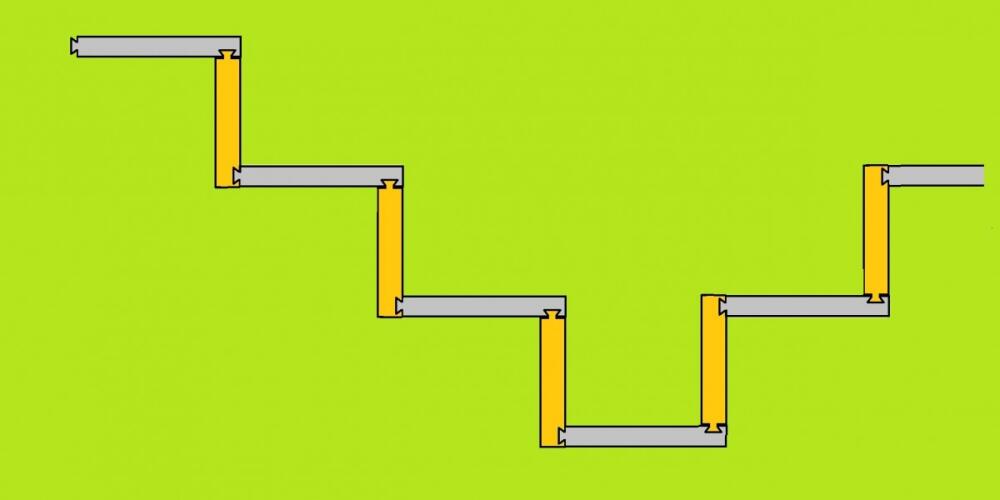
Most people fence their houses and farms most often with wire fences. Such fences are good against dogs, jackals, foxes and similar animals. These fences can well keep chickens, sheep, goats or cows inside the fence. However, large animals can easily break down wire fences. Therefore, those who want to protect themselves must make masonry or concrete fences.
Such solid fences could be made much faster and cheaper by using industrially made concrete elements that could be mechanically very easily placed where the wall should be placed. Such concrete elements should have a triangular protrusion on one side and a triangular groove placed on the other side. Such concrete elements would be interconnected in a fence like Lego bricks. They would be placed on level ground directly from the truck using a truck crane, or forklifts. Therefore, these concrete elements should have small openings at the top and bottom through which the cables of the truck crane, or buckets of forklifts, would pass.
The concrete elements would stack each other at a 90-degree angle, as shown in the figure above, and would therefore be very resistant to collapse.
For protection against wild boar, it would be sufficient to install concrete elements measuring 1 x 1 meter. This height would be quite enough to prevent the pigs from crossing the fence.
For protection from feral cows, horses, buffaloes, bison and animals of similar size, it would be sufficient to have elements measuring 1.5 x 1.5 meters.
For protection from the largest animals such as elephants fences should be built of concrete elements measuring 2 x 2 meters. If a strip with iron spikes or razor wire were placed on top of such elements, such a fence could also protect against beasts such as wolves, bears, panthers, lions and tigers.
Housing for animals or people could be quickly built from such 2.5-meter-high concrete elements. In this case, there should be two types of concrete elements, one type that has a triangular groove on the side, and the other that has a groove at the top of the page so that more elements can be stacked in a straight wall line. In this way, the walls of the dwelling could be built very quickly with a crane or forklift, while the ceiling and the roof made of wooden beams could then be easily and quickly placed on solid concrete walls.
Tags
Featured articles